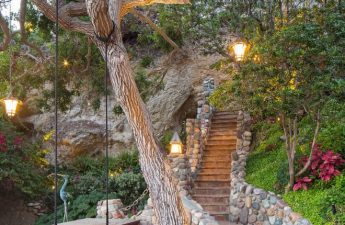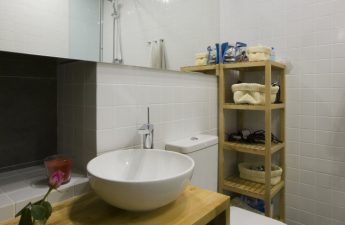Russia's cultural heritage is enormous.Is it possible to tell about it with the help of a drawing? It turned out that yes. Artist and designer Evgenia Miro has become a real guide of Russian culture to the European world. Evgenia Miro graduated from the St. Petersburg Academy of Arts. The incredible range of her work is amazing: the artist creates designs for textiles, porcelain, jewelry, ceramics, lamps, furniture. You could see Evgenia Miro's design items on March 5 at the exhibition and sale in the Desing & Decoration Center. The etk-fashion.com portal acted as an information partner of this event.

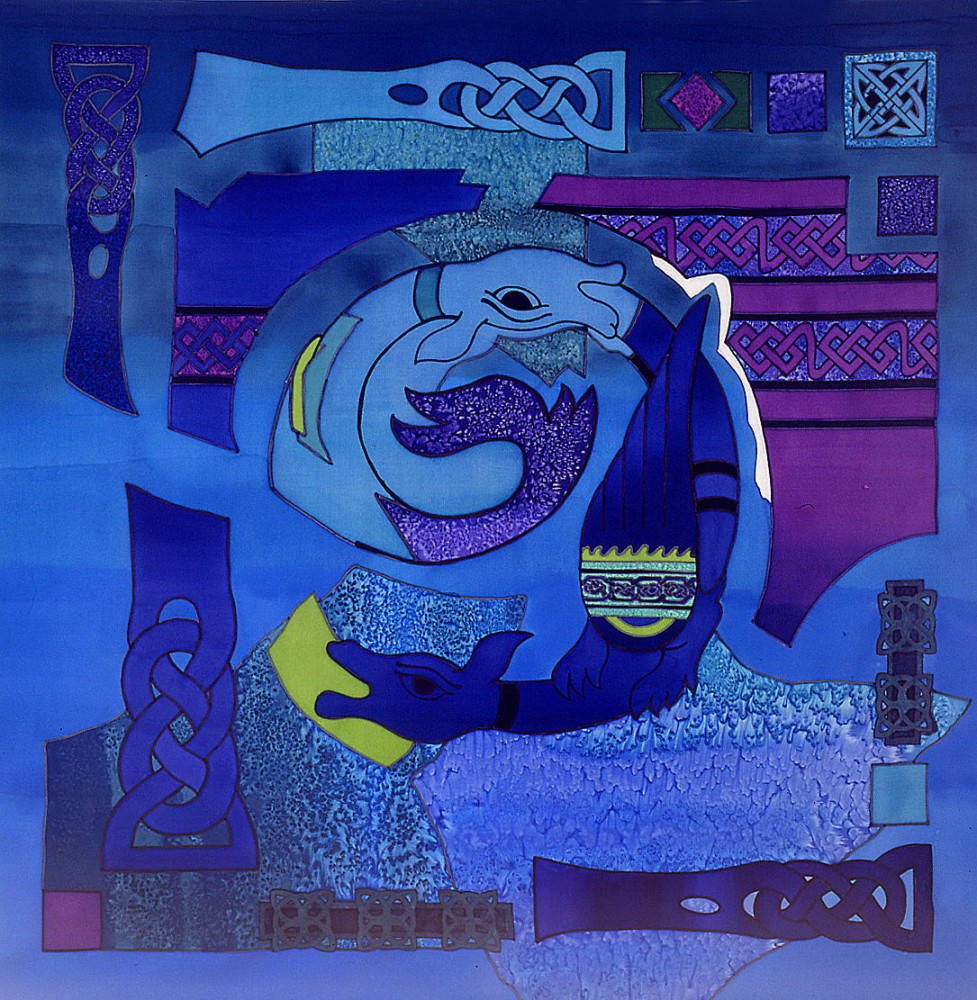 Сегодня Евгения Миро рассказала Roomble о своих новых проектах, об особенностях работы с разными компаниями и о том, как можно с помощью рисунка показать целую историю. — — Евгения, на выставке-продаже 5 марта было представлено множество предметов дизайна. Расскажите о некоторых из них. — — Не так давно я создала арт-проект — это лампа-лестница под названием «Вечность пути», которая может быть как напольной, так и настольной. Ни у кого из дизайнеров не было ничего подобного, поэтому было бы очень интересно запустить этот проект в производство. Также я сотрудничала с французской галереей Granville Gallery в Париже, которая предложила 25 французским дизайнерам создать предметный дизайн на тему Secret Box. Для меня главным секретом в мире является душа человека, и я очень хотела отразить это в своей работе. Сначала была идея сделать скульптуру из единого стекла, но во Франции было бы очень сложно заказать это на производстве. Поэтому вся работа делалась вручную. Получилась скульптура под названием «Крылышко ангела», она представляет собой сферу, в которой находится пёрышко, символизирующее душу человека. Ещё один мой проект — лампа-панно, которая может «выдержать» и дневной свет, а вечером работает как источник мягкого освещения. — — Вы известны своим сотрудничеством с Домом Hermès. Расскажите, как оно началось? — — Моя первая встреча с Домом Hermès состоялась в Англии — я уехала в Лондон после того, как окончила Санкт-Петербургскую академию художеств. Один из моих друзей, музыкант Юра Степанов, сказал: «Женя, ты же настоящий клад, пойдём!». Так мы попали в компанию Mikimoto. В Mikimoto у нас была встреча с вице-президентом компании мистером Такахаши. Нам очень повезло, что он был в бутике именно в это время. Мистеру Такахаши понравились мои работы, мы проговорили полтора часа. Он спросил меня, могу ли я сделать дизайн для 100 платков? Я очень не люблю повторяться, поэтому ответила отказом. В итоге договорились, что я создам дизайн для десяти платков. А представители Hermès увидели мои работы позже, и я даже получила рекомендательное письмо, которое, к сожалению, было утеряно. Через три года после этих событий я по делам оказалась в Москве (в то время я жила то в Санкт-Петербурге, то в Лондоне). Когда я приехала в столицу, мы гуляли с друзьями, зашли в бутик Hermès и я рассказала эту историю. Так я познакомилась с Ириной Васильевной Педько — первым арт-директором бутика Hermès в столице. Ей также понравились мои работы, и в скором времени мне передали, чтобы я ждала звонка. Спустя год я снова оказалась в Москве. И вдруг звонок: приезжайте срочно в бутик. Состоялась прекрасная встреча, на которой французы посмотрели мои работы и сразу же пригласили приехать в Париж. В июне мы с Ириной Васильевной отправились в столицу Франции. — — А каким было самое первое задание от Дома Hermès? — — Мне очень хотелось показать всю многогранность культурного наследия России. Мои работы увидел Пьер-Алексис Дюма, глава Дома Hermès. Наша встреча продлилась 2,5 часа, очень долго по европейским меркам. Меня попросили прийти на следующий день, и тогда я уже рисовала в студии. В итоге я получила направления на 15 дизайнов в трёх департаментах (платки, браслеты, фарфор). Конечно, были свои сложности — я ведь никогда не рисовала посуду и ювелирные украшения. А платки — это, безусловно, моё.
Сегодня Евгения Миро рассказала Roomble о своих новых проектах, об особенностях работы с разными компаниями и о том, как можно с помощью рисунка показать целую историю. — — Евгения, на выставке-продаже 5 марта было представлено множество предметов дизайна. Расскажите о некоторых из них. — — Не так давно я создала арт-проект — это лампа-лестница под названием «Вечность пути», которая может быть как напольной, так и настольной. Ни у кого из дизайнеров не было ничего подобного, поэтому было бы очень интересно запустить этот проект в производство. Также я сотрудничала с французской галереей Granville Gallery в Париже, которая предложила 25 французским дизайнерам создать предметный дизайн на тему Secret Box. Для меня главным секретом в мире является душа человека, и я очень хотела отразить это в своей работе. Сначала была идея сделать скульптуру из единого стекла, но во Франции было бы очень сложно заказать это на производстве. Поэтому вся работа делалась вручную. Получилась скульптура под названием «Крылышко ангела», она представляет собой сферу, в которой находится пёрышко, символизирующее душу человека. Ещё один мой проект — лампа-панно, которая может «выдержать» и дневной свет, а вечером работает как источник мягкого освещения. — — Вы известны своим сотрудничеством с Домом Hermès. Расскажите, как оно началось? — — Моя первая встреча с Домом Hermès состоялась в Англии — я уехала в Лондон после того, как окончила Санкт-Петербургскую академию художеств. Один из моих друзей, музыкант Юра Степанов, сказал: «Женя, ты же настоящий клад, пойдём!». Так мы попали в компанию Mikimoto. В Mikimoto у нас была встреча с вице-президентом компании мистером Такахаши. Нам очень повезло, что он был в бутике именно в это время. Мистеру Такахаши понравились мои работы, мы проговорили полтора часа. Он спросил меня, могу ли я сделать дизайн для 100 платков? Я очень не люблю повторяться, поэтому ответила отказом. В итоге договорились, что я создам дизайн для десяти платков. А представители Hermès увидели мои работы позже, и я даже получила рекомендательное письмо, которое, к сожалению, было утеряно. Через три года после этих событий я по делам оказалась в Москве (в то время я жила то в Санкт-Петербурге, то в Лондоне). Когда я приехала в столицу, мы гуляли с друзьями, зашли в бутик Hermès и я рассказала эту историю. Так я познакомилась с Ириной Васильевной Педько — первым арт-директором бутика Hermès в столице. Ей также понравились мои работы, и в скором времени мне передали, чтобы я ждала звонка. Спустя год я снова оказалась в Москве. И вдруг звонок: приезжайте срочно в бутик. Состоялась прекрасная встреча, на которой французы посмотрели мои работы и сразу же пригласили приехать в Париж. В июне мы с Ириной Васильевной отправились в столицу Франции. — — А каким было самое первое задание от Дома Hermès? — — Мне очень хотелось показать всю многогранность культурного наследия России. Мои работы увидел Пьер-Алексис Дюма, глава Дома Hermès. Наша встреча продлилась 2,5 часа, очень долго по европейским меркам. Меня попросили прийти на следующий день, и тогда я уже рисовала в студии. В итоге я получила направления на 15 дизайнов в трёх департаментах (платки, браслеты, фарфор). Конечно, были свои сложности — я ведь никогда не рисовала посуду и ювелирные украшения. А платки — это, безусловно, моё. 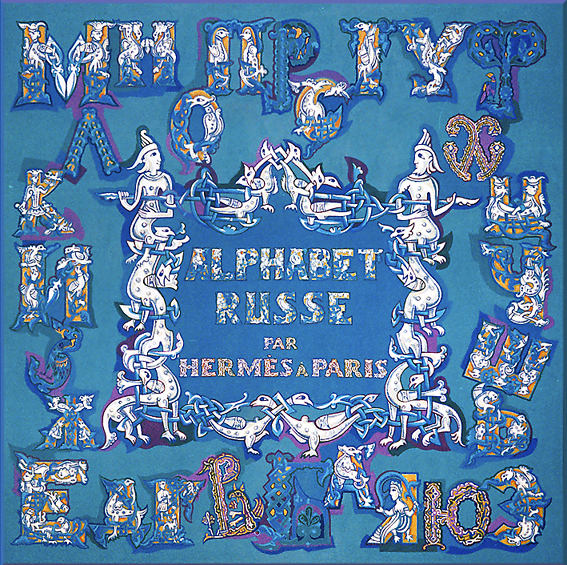

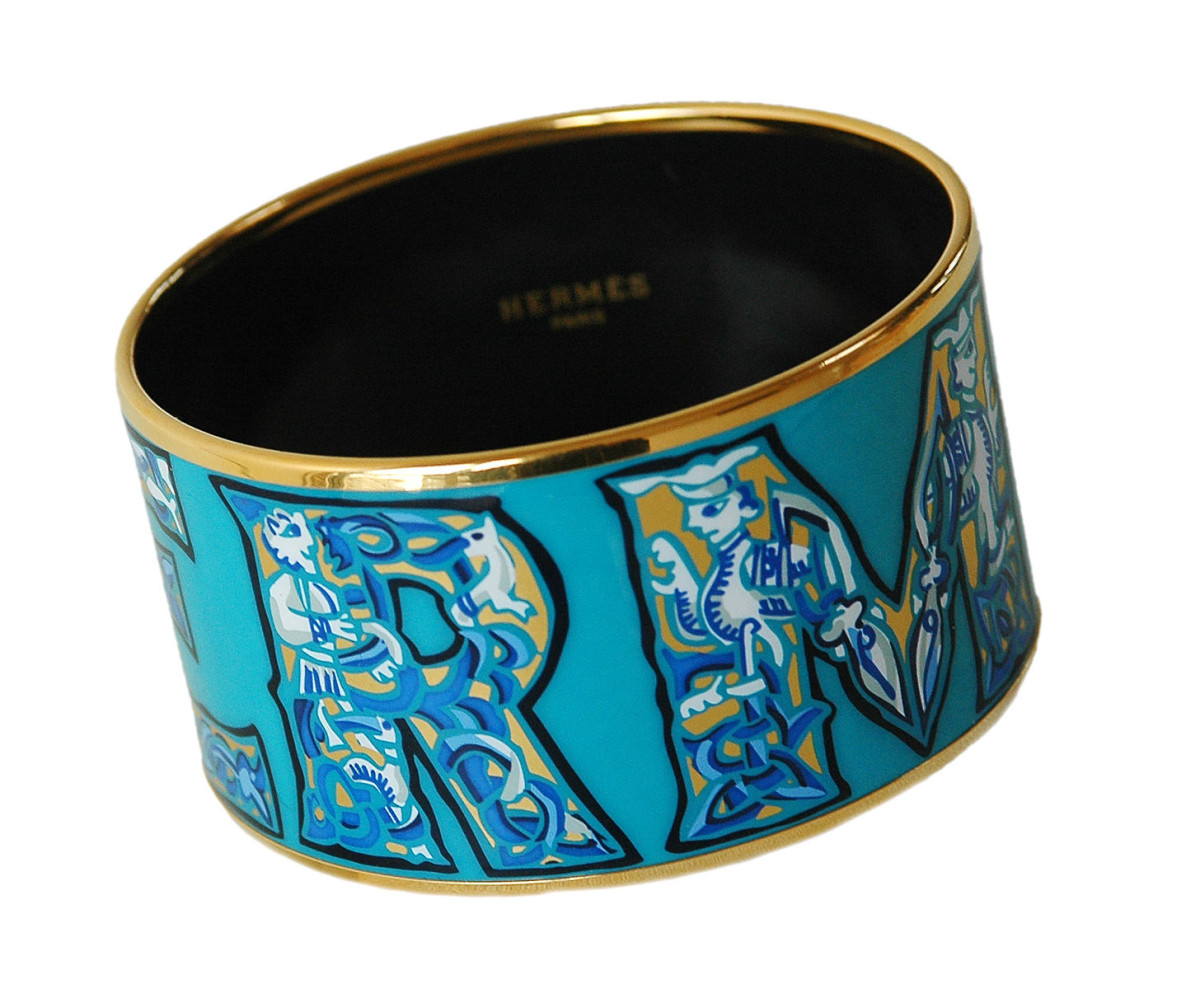 — - Each scarf is made inseveral colors. Are the main colors set by the House of Hermès or by the artist? — Yes, each scarf is presented in eight colors, this is their specialty. The House of Hermès has the right to change the colors, since the artist completely transfers the copyright. By the way, each design is created only by hand and submitted on paper. Every stroke is drawn! Therefore, Hermès scarves are created in drawing from two to six months. On average, this is 2-3 months of serious work. The designer has certain rights - for example, he can offer different names for the scarf. In addition, it is important to find a beautiful image of the outline, and where exactly in the scarf design the name of the House will be. For example, there is a scarf called "Zabavushka", where children play with cubes, and the name of the company is formed from them. Each scarf has the designer's signature. The scarf is prepared for production for about two years - the image is scanned, transferred by hand, and a cliché is developed for each color. This guarantees an exact match - color to color. The House of Hermès has a very high level of production, style, culture, so every design developed by the House is a work of art.
— - Each scarf is made inseveral colors. Are the main colors set by the House of Hermès or by the artist? — Yes, each scarf is presented in eight colors, this is their specialty. The House of Hermès has the right to change the colors, since the artist completely transfers the copyright. By the way, each design is created only by hand and submitted on paper. Every stroke is drawn! Therefore, Hermès scarves are created in drawing from two to six months. On average, this is 2-3 months of serious work. The designer has certain rights - for example, he can offer different names for the scarf. In addition, it is important to find a beautiful image of the outline, and where exactly in the scarf design the name of the House will be. For example, there is a scarf called "Zabavushka", where children play with cubes, and the name of the company is formed from them. Each scarf has the designer's signature. The scarf is prepared for production for about two years - the image is scanned, transferred by hand, and a cliché is developed for each color. This guarantees an exact match - color to color. The House of Hermès has a very high level of production, style, culture, so every design developed by the House is a work of art.
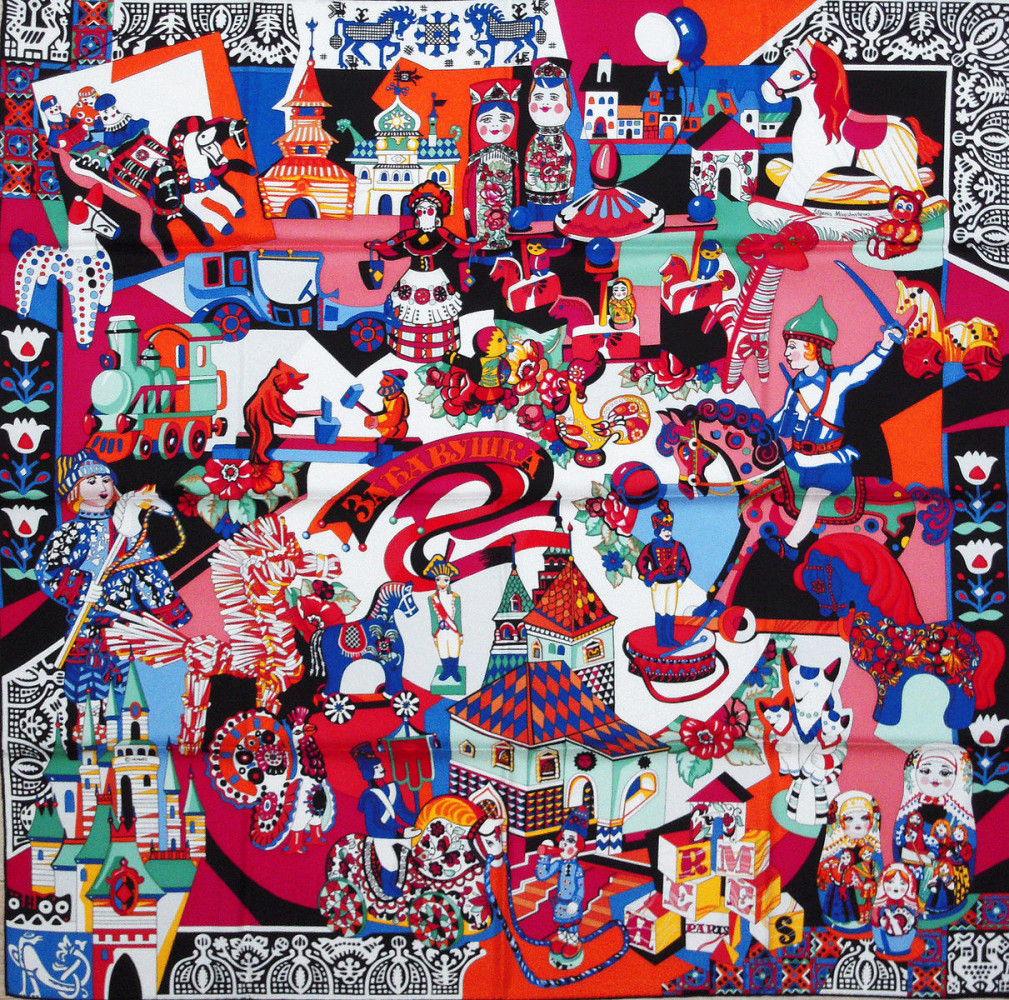
 — — Can you say thatdid your collaboration with the House of Hermès have a huge impact on your entire professional career in the future? — Yes, for me it was a very significant professional moment. When a design is created for the House of Hermès, serious work is done on every millimeter, and this becomes your professional trait for life. The level of work on projects in this House is very high. Therefore, I am very grateful for the experience I received. It was after working with the House of Hermès that I got to the Maison & Objet exhibition, where I met the presidents of other companies. — Evgenia, you also developed tableware designs for the House of Hermès, right? — Yes. The task sounded very difficult and unusual - it was necessary to express the theme of Diaghilev's theater seasons in an abstract manner in ornaments. It was quite difficult. I made a dish, and six dessert plates to go with it. Before me, no one had done it so that the plate border was broken into its own separate rhythms - this allowed to create a pattern. In general, the Russian soul is characterized by love and passion for rhythm, for decorativeness. When I studied the world culture of symbolism, I realized that the cultural heritage of each country gave the world an individual plasticity and rhythm, which are very clearly expressed in decorative objects.
— — Can you say thatdid your collaboration with the House of Hermès have a huge impact on your entire professional career in the future? — Yes, for me it was a very significant professional moment. When a design is created for the House of Hermès, serious work is done on every millimeter, and this becomes your professional trait for life. The level of work on projects in this House is very high. Therefore, I am very grateful for the experience I received. It was after working with the House of Hermès that I got to the Maison & Objet exhibition, where I met the presidents of other companies. — Evgenia, you also developed tableware designs for the House of Hermès, right? — Yes. The task sounded very difficult and unusual - it was necessary to express the theme of Diaghilev's theater seasons in an abstract manner in ornaments. It was quite difficult. I made a dish, and six dessert plates to go with it. Before me, no one had done it so that the plate border was broken into its own separate rhythms - this allowed to create a pattern. In general, the Russian soul is characterized by love and passion for rhythm, for decorativeness. When I studied the world culture of symbolism, I realized that the cultural heritage of each country gave the world an individual plasticity and rhythm, which are very clearly expressed in decorative objects.
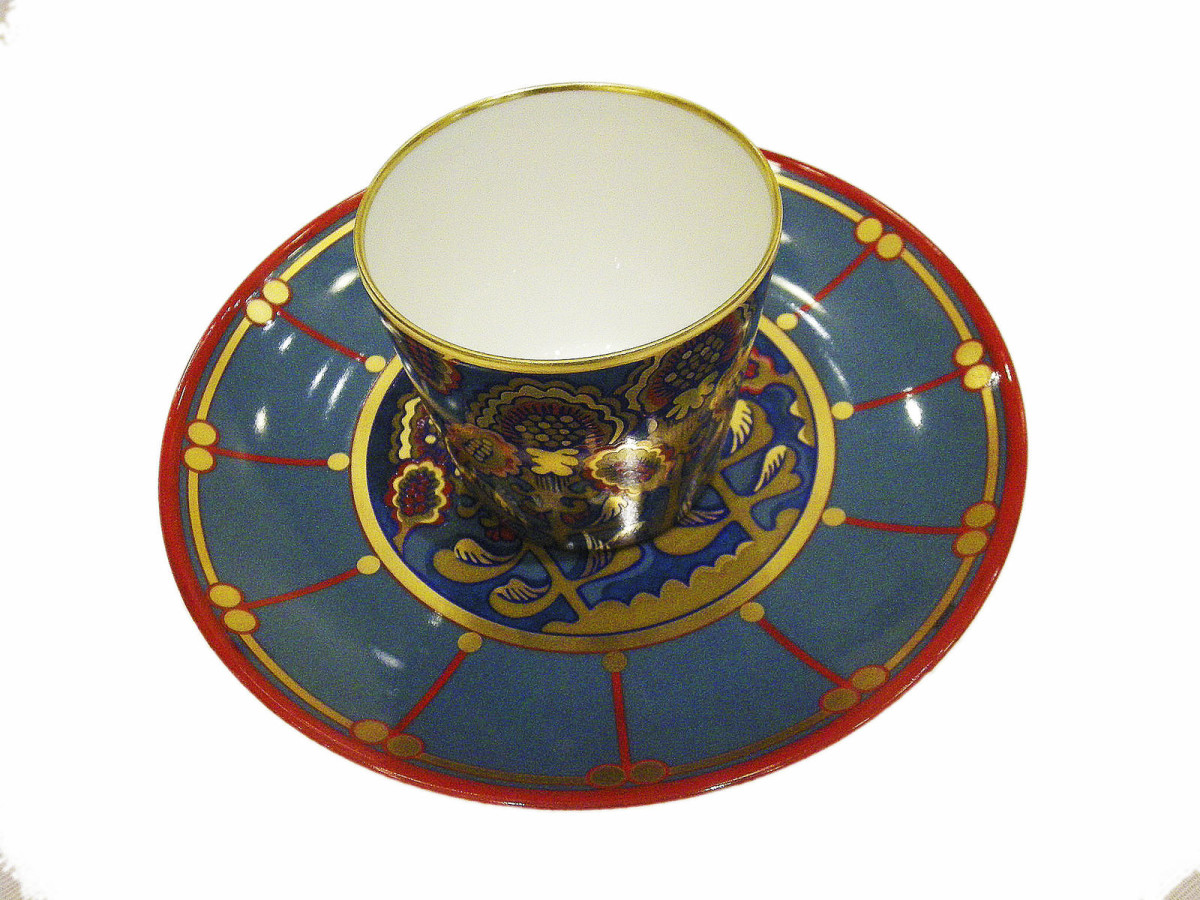
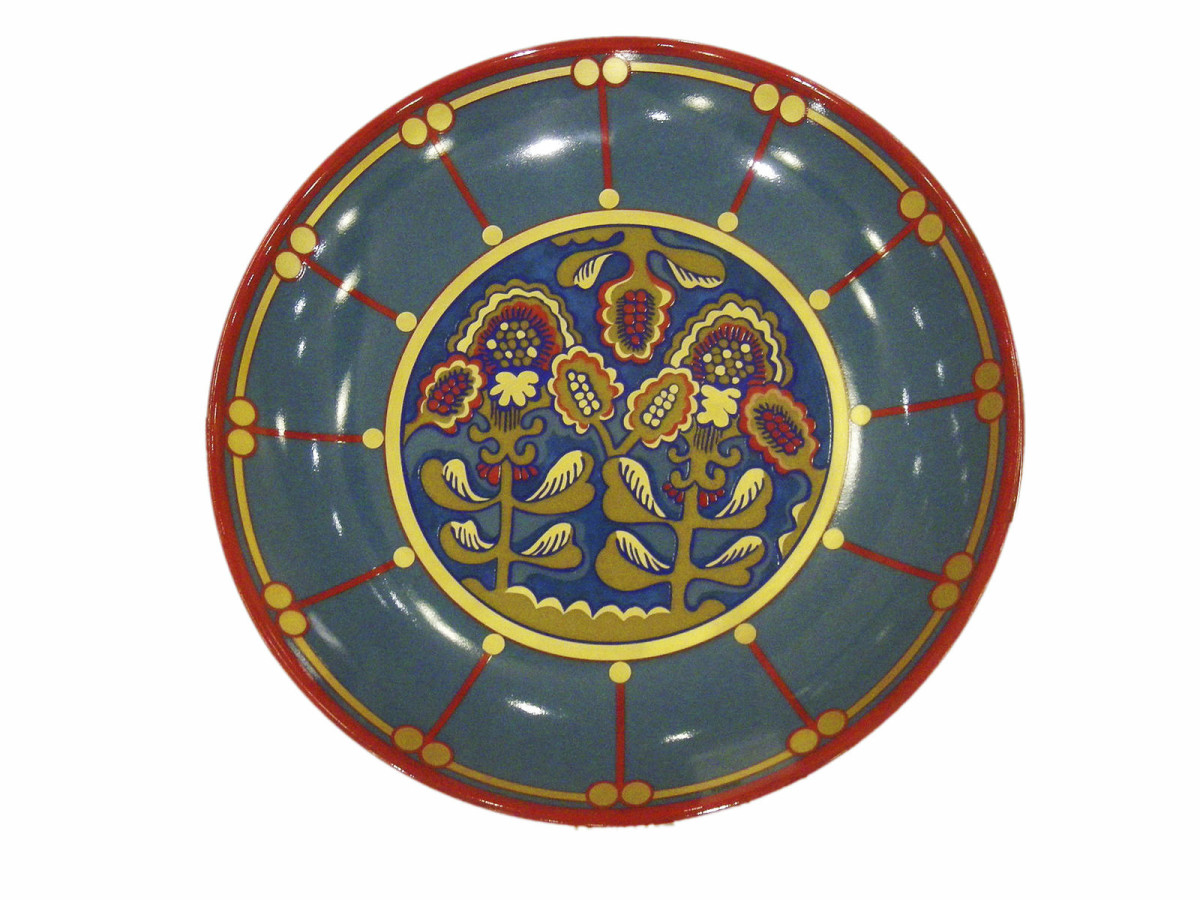 - You collaborate with manyEuropean companies and quite actively tell about Russian culture through design. — It is very interesting to transform Russian culture in modern design for European brands. For example, I work with Emaux de Longwy and created a ceramic collection, where each project was hand-painted. We released four collections with this company. In collaboration with J.Seignolles, I released a dessert collection "Petrushka" made of porcelain. Moreover, it is not even a dessert collection, but a small tableware. An interesting experiment was with the Vassilissa collection for Serdaneli, a company that deals with plumbing. I was faced with the task of making the porcelain part — handles for hot and cold water — with a complex and delicate pattern. And it is only 3 cm. It was necessary to create a beautiful, unusual thing in the Russian style. Not everything was done according to my design, but production is a very complex process. There was a wonderful presentation of this collection in Moscow at the Référence Moskva exhibition, and we found a solution in presenting my drawings in frames under glass. There was also an interesting work for Pierre Frey on the theme of Russian theater. I developed several projects for him. For the Beauvillé company, I created a design for a tablecloth collection. Everything was drawn by hand and in life-size. When creating the design, it was important to take into account the production aspect, since the contacts had to be butt to butt. You could say that in some ways it was routine work. But as our teacher at the academy used to say: “If an artist does not like dirty work, then he is not an artist.” If we talk about the future, then I want to work in the world of glass and I would like to do one project that will be connected on a large scale with Russian culture.
- You collaborate with manyEuropean companies and quite actively tell about Russian culture through design. — It is very interesting to transform Russian culture in modern design for European brands. For example, I work with Emaux de Longwy and created a ceramic collection, where each project was hand-painted. We released four collections with this company. In collaboration with J.Seignolles, I released a dessert collection "Petrushka" made of porcelain. Moreover, it is not even a dessert collection, but a small tableware. An interesting experiment was with the Vassilissa collection for Serdaneli, a company that deals with plumbing. I was faced with the task of making the porcelain part — handles for hot and cold water — with a complex and delicate pattern. And it is only 3 cm. It was necessary to create a beautiful, unusual thing in the Russian style. Not everything was done according to my design, but production is a very complex process. There was a wonderful presentation of this collection in Moscow at the Référence Moskva exhibition, and we found a solution in presenting my drawings in frames under glass. There was also an interesting work for Pierre Frey on the theme of Russian theater. I developed several projects for him. For the Beauvillé company, I created a design for a tablecloth collection. Everything was drawn by hand and in life-size. When creating the design, it was important to take into account the production aspect, since the contacts had to be butt to butt. You could say that in some ways it was routine work. But as our teacher at the academy used to say: “If an artist does not like dirty work, then he is not an artist.” If we talk about the future, then I want to work in the world of glass and I would like to do one project that will be connected on a large scale with Russian culture.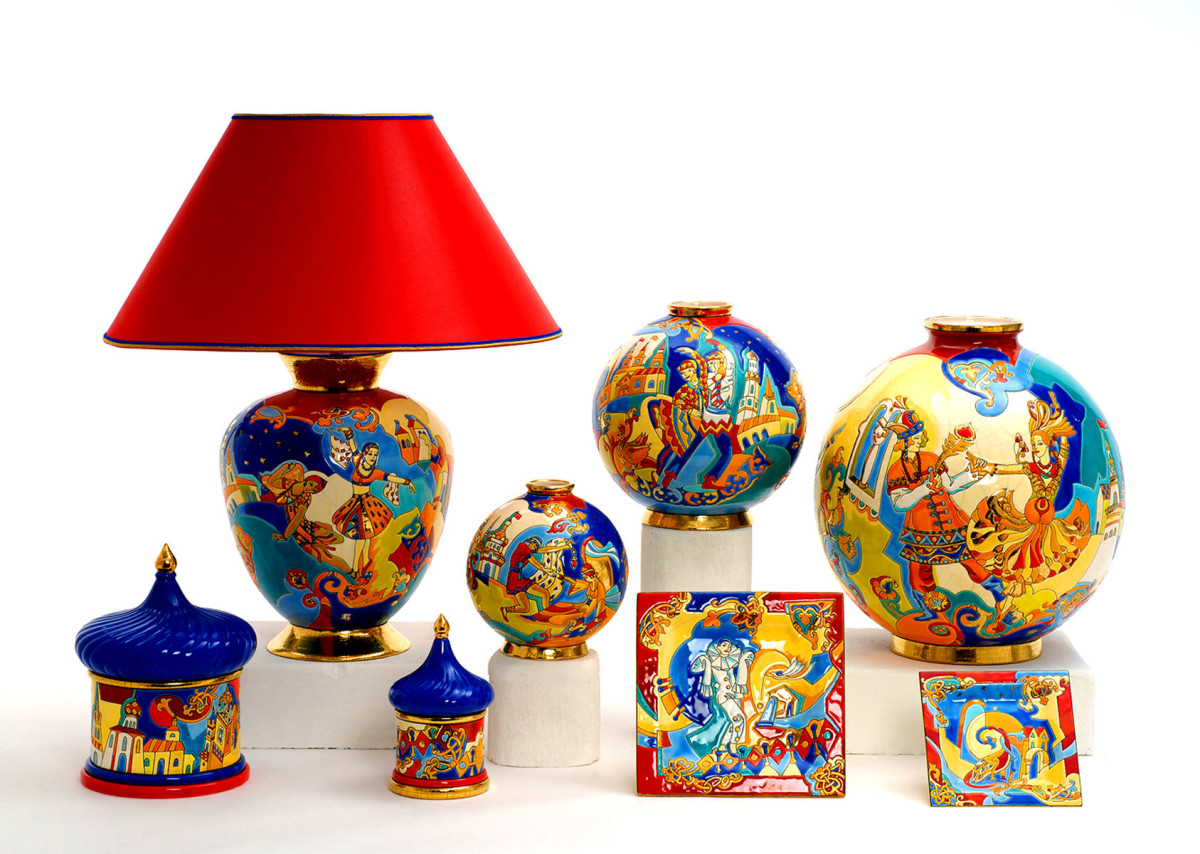

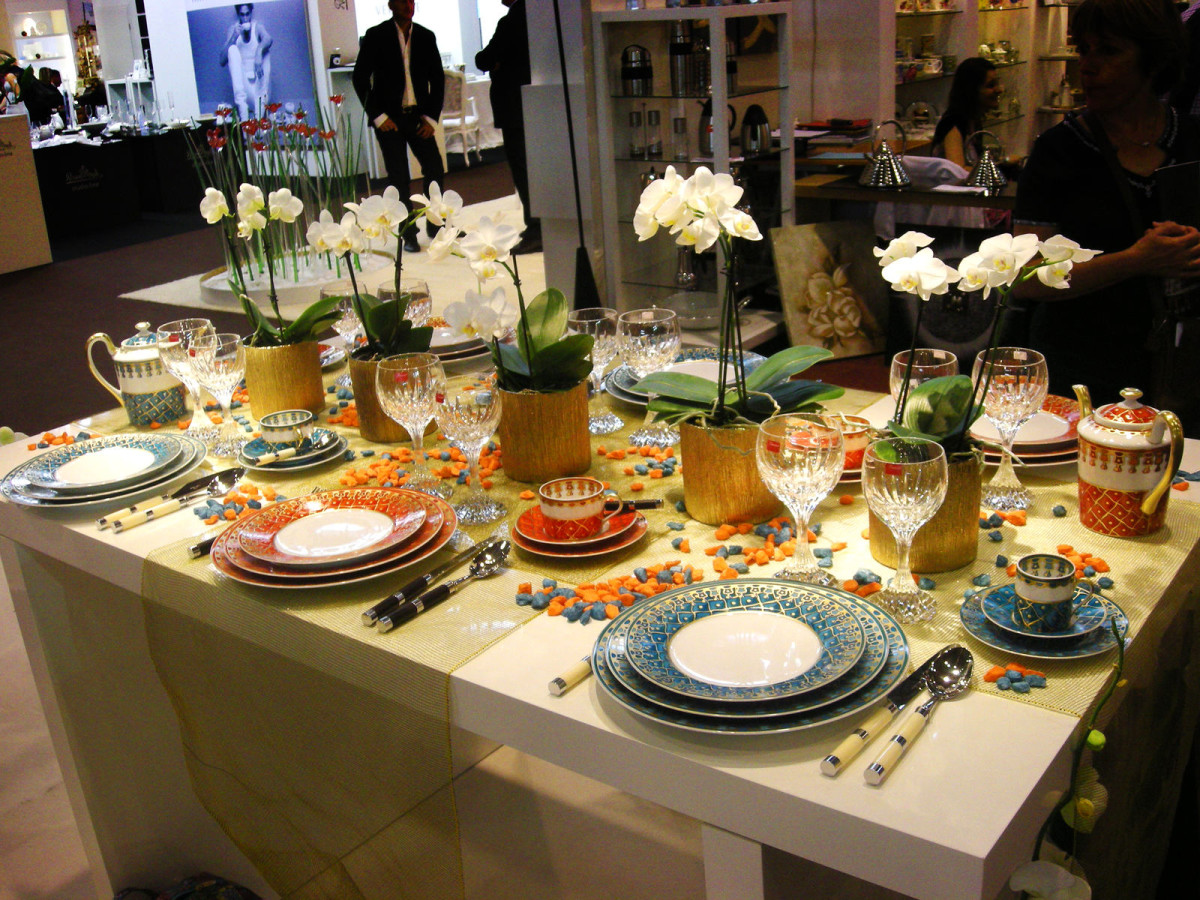 — - You said that you wantto make a project that will be connected with Russian culture on a large scale. Tell us more about it. — First, I would like to collect a lot of different material. I would like to note that few designers and fashion designers are truly and deeply involved in the topic of Russian culture. One of the brightest representatives is the artist and fashion designer Vyacheslav Zaitsev. For me, he is a person of unique culture, strength, nobility and love for what he does. Vyacheslav Mikhailovich has deep respect for every creative person.
— - You said that you wantto make a project that will be connected with Russian culture on a large scale. Tell us more about it. — First, I would like to collect a lot of different material. I would like to note that few designers and fashion designers are truly and deeply involved in the topic of Russian culture. One of the brightest representatives is the artist and fashion designer Vyacheslav Zaitsev. For me, he is a person of unique culture, strength, nobility and love for what he does. Vyacheslav Mikhailovich has deep respect for every creative person.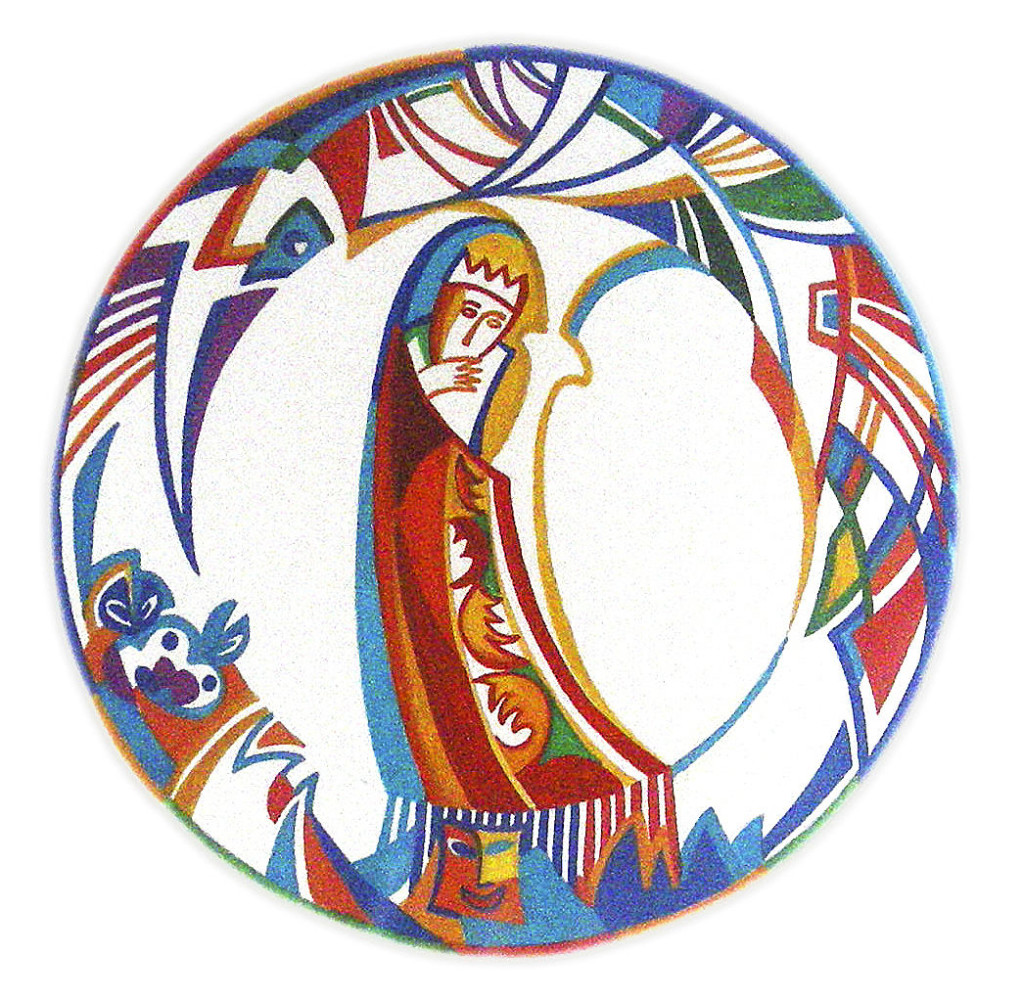
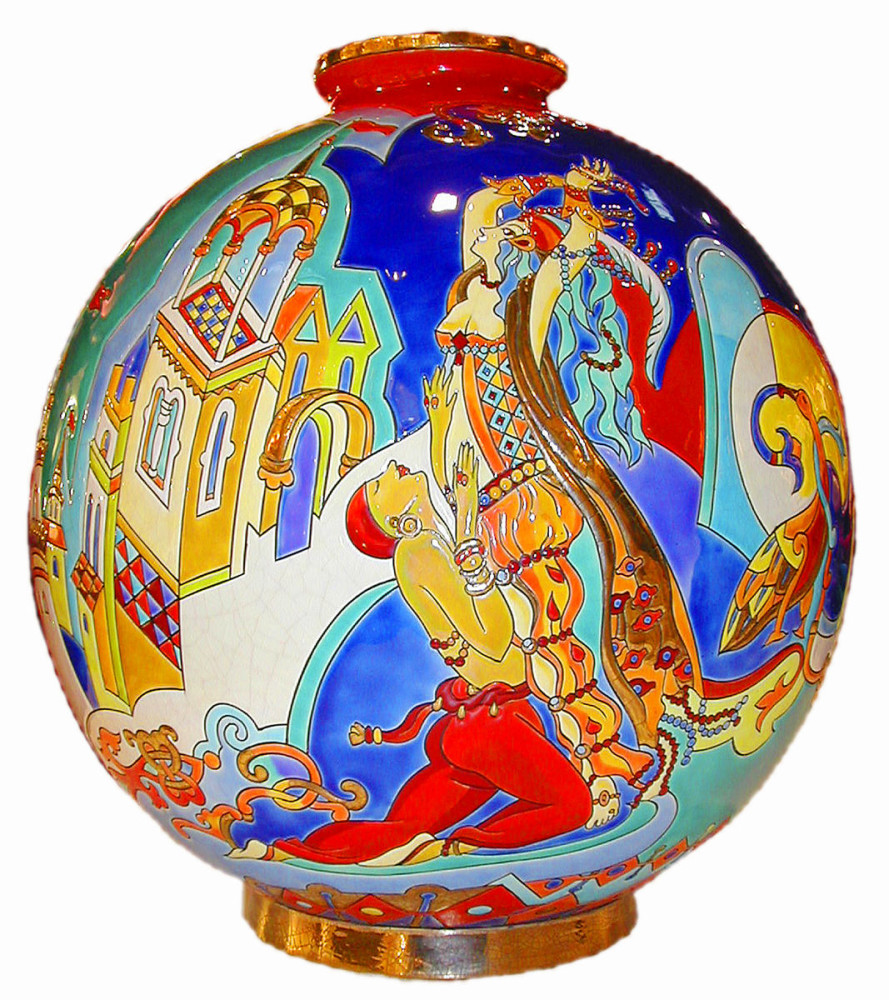
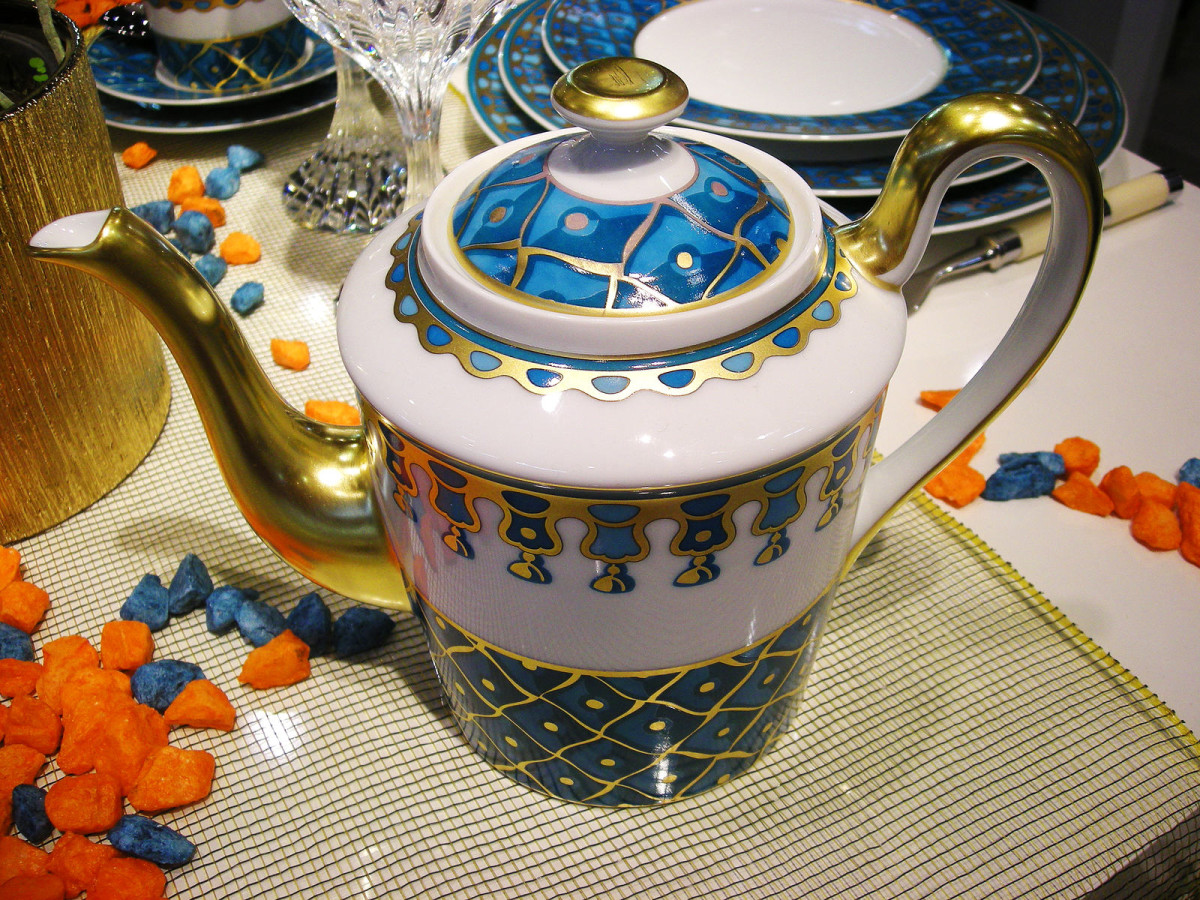 — — What was the most difficult thing for you inwork in Europe? — — At first, the most difficult thing for me was working for several companies at the same time. Because when you are simultaneously developing a design for five or six companies, you must realize that each has its own style and direction. The second important point is knowing how to create a design for production. I definitely studied production — this gives you an understanding of how you need to create. There are set production parameters that must be taken into account, but when you create a work of art, you put your soul and love into it, and this really helps in your work. It turns out that we, designers, are very dependent on the conditions. However, even with the given parameters, you can create a beautiful thing. It is an important task to find a balance. — — Which Russian manufacturer would you like to work with? — — Not long ago, I took part in Andrey Popov’s wonderful project “Peace Bench”, in which each artist creates their own image on a bench. And for the opening of the museum and exhibition complex "New Jerusalem" I painted a triptych on wooden benches, and guests signed one of them - Chairman of the Government of the Russian Federation Dmitry Medvedev, Patriarch of the Russian Orthodox Church Kirill and Governor of the Moscow Region Andrei Vorobyov. Another organization with which I collaborated in Russia is Desing & Decoration Center. On February 26, I was asked to hold a master class. I also do projects with the Lomonosov Plant. In addition, I had a meeting with the Pavlovo Posad Manufactory, next week I will go to the production. I want to make new collections for Russian brands, to reach a modern level of design. I want to say that Pavlovsky Posad has good production, they also draw everything by hand, and these are quite complex ornaments. Previously, I was very busy in France, I came to Russia as if I were visiting. But now I will be here more often.
— — What was the most difficult thing for you inwork in Europe? — — At first, the most difficult thing for me was working for several companies at the same time. Because when you are simultaneously developing a design for five or six companies, you must realize that each has its own style and direction. The second important point is knowing how to create a design for production. I definitely studied production — this gives you an understanding of how you need to create. There are set production parameters that must be taken into account, but when you create a work of art, you put your soul and love into it, and this really helps in your work. It turns out that we, designers, are very dependent on the conditions. However, even with the given parameters, you can create a beautiful thing. It is an important task to find a balance. — — Which Russian manufacturer would you like to work with? — — Not long ago, I took part in Andrey Popov’s wonderful project “Peace Bench”, in which each artist creates their own image on a bench. And for the opening of the museum and exhibition complex "New Jerusalem" I painted a triptych on wooden benches, and guests signed one of them - Chairman of the Government of the Russian Federation Dmitry Medvedev, Patriarch of the Russian Orthodox Church Kirill and Governor of the Moscow Region Andrei Vorobyov. Another organization with which I collaborated in Russia is Desing & Decoration Center. On February 26, I was asked to hold a master class. I also do projects with the Lomonosov Plant. In addition, I had a meeting with the Pavlovo Posad Manufactory, next week I will go to the production. I want to make new collections for Russian brands, to reach a modern level of design. I want to say that Pavlovsky Posad has good production, they also draw everything by hand, and these are quite complex ornaments. Previously, I was very busy in France, I came to Russia as if I were visiting. But now I will be here more often.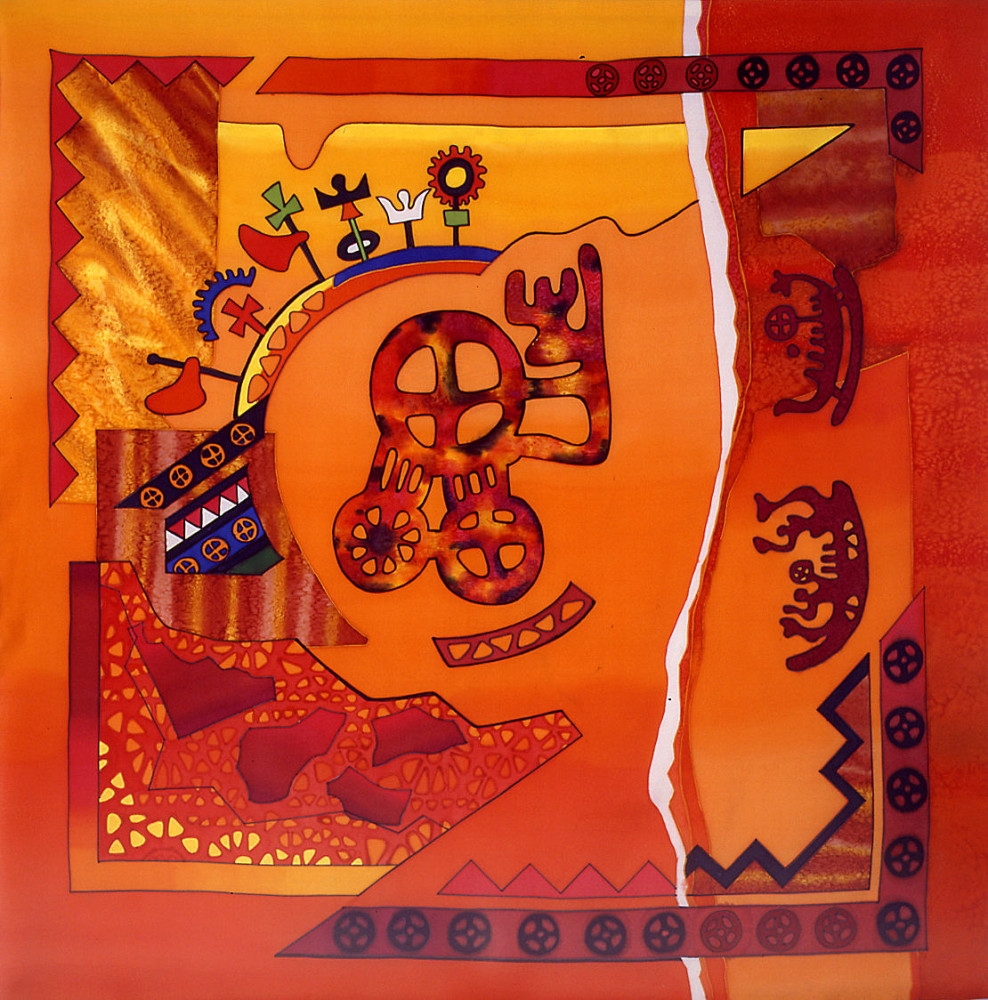
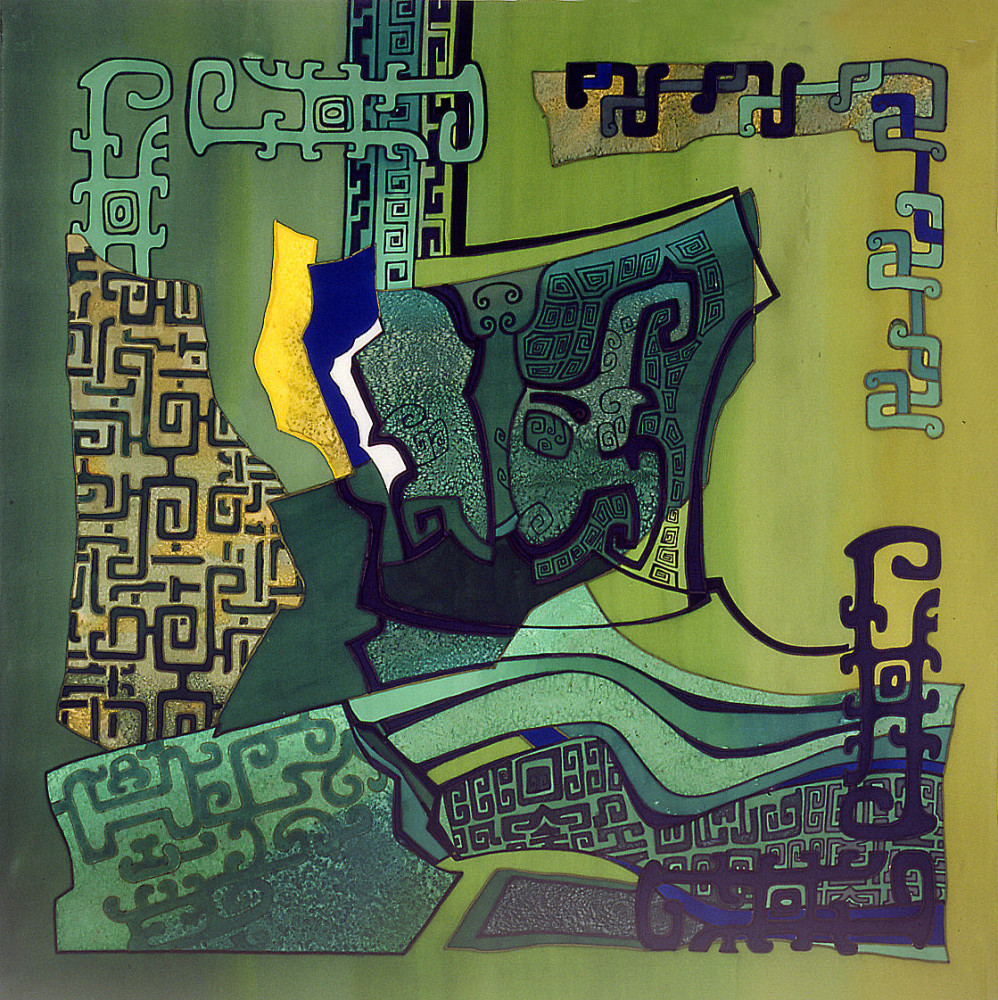
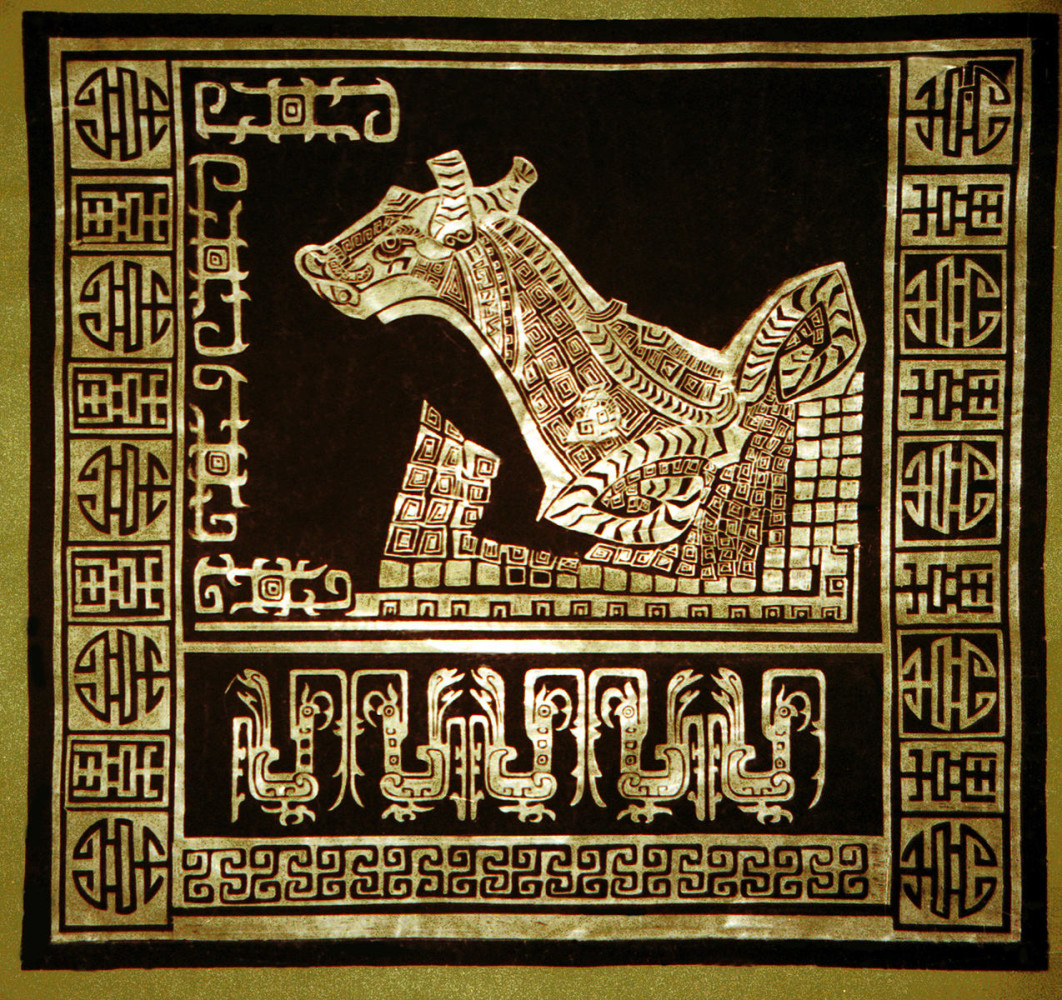 — — What do you think about RussianAre manufacturers able to pay for their work at the same level as European ones? — I think you can always agree on the exact terms of your work. One option is to go for a percentage when creating a design. This is very convenient when the work diverges on a large scale. You can sell the design as an idea. — Evgeniya, you also managed to work in Italy, right? — Yes, I collaborated with Roberto Provasi. They invited me after they found out that I was working for the House of Hermès. I visited their museum, looked at the Provasi style for wood and created tableware in the company's style. Unfortunately, this project has not yet been implemented, since the collection is to be released by the French. By the way, creating dinnerware sets is one of the most beautiful themes. I really like the idea of creating a unique design for a family. As a designer, I would be very interested in doing this. — And would the production undertake private orders, what do you think? — — In fact, it is not difficult to implement such an idea: any porcelain production starts from ten units. I communicate with many presidents of porcelain companies, I am well known in Paris, so making a private order is not a problem. The main thing is to find a beautiful solution to the image and embody it in a certain form. After all, creating a design is, first of all, an understanding of style-form-plasticity-dynamics. Everything is intertwined. photographer Andrey Berg; evgeniamiro.com
— — What do you think about RussianAre manufacturers able to pay for their work at the same level as European ones? — I think you can always agree on the exact terms of your work. One option is to go for a percentage when creating a design. This is very convenient when the work diverges on a large scale. You can sell the design as an idea. — Evgeniya, you also managed to work in Italy, right? — Yes, I collaborated with Roberto Provasi. They invited me after they found out that I was working for the House of Hermès. I visited their museum, looked at the Provasi style for wood and created tableware in the company's style. Unfortunately, this project has not yet been implemented, since the collection is to be released by the French. By the way, creating dinnerware sets is one of the most beautiful themes. I really like the idea of creating a unique design for a family. As a designer, I would be very interested in doing this. — And would the production undertake private orders, what do you think? — — In fact, it is not difficult to implement such an idea: any porcelain production starts from ten units. I communicate with many presidents of porcelain companies, I am well known in Paris, so making a private order is not a problem. The main thing is to find a beautiful solution to the image and embody it in a certain form. After all, creating a design is, first of all, an understanding of style-form-plasticity-dynamics. Everything is intertwined. photographer Andrey Berg; evgeniamiro.com
Evgenia Miro and Russian culture for French companies

